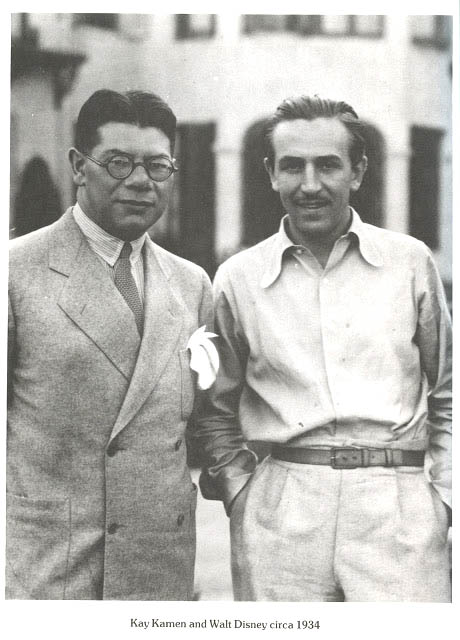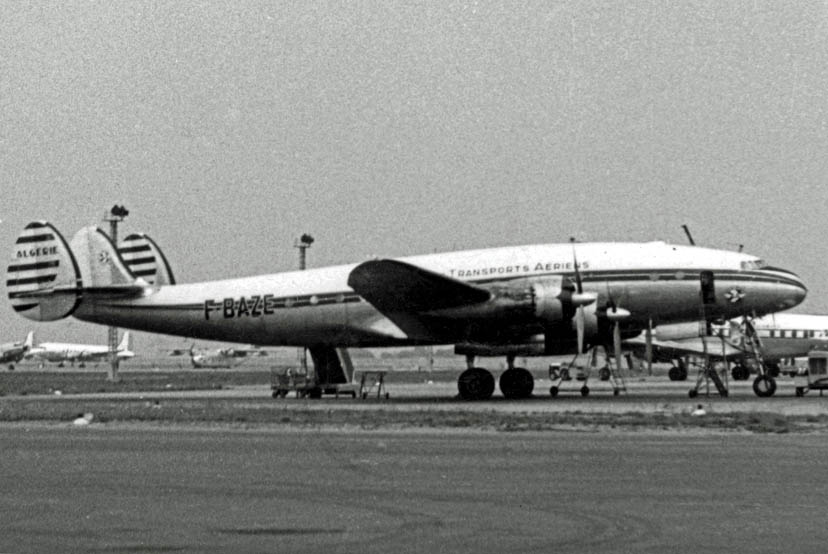Kay Kamen
 During
the Great American Depression of the 1930s, while U.S. President
Herbert Hoover promised a chicken in every pot, Kay Kamen promised a
Disney character in every home. A stickler for quality, he set an
unprecedented standard in licensing Disney character merchandise -
books, music, plush toys and more - and subsequently, helped
transform Mickey Mouse, and other Disney characters, into megastars. During
the Great American Depression of the 1930s, while U.S. President
Herbert Hoover promised a chicken in every pot, Kay Kamen promised a
Disney character in every home. A stickler for quality, he set an
unprecedented standard in licensing Disney character merchandise -
books, music, plush toys and more - and subsequently, helped
transform Mickey Mouse, and other Disney characters, into megastars.
By 1935, three years after Kay joined forces
with Disney, Mickey Mouse products, alone, numbered in the
thousands, bringing the fledgling Studio much-needed seed money so
that Walt Disney could spin his dreams, including the first
full-length animated feature "Snow White and the Seven Dwarfs."
Additionally, when the animated classic was released in 1937, Kay
had an extensive "Snow White" merchandising campaign in place, which
was the first of its kind and later copied by other studios.
 Publisher of "Tomart's Disneyana Update" Tom
Tumbusch said, "Kay Kamen invented the whole licensing industry. Not
just for Disney, alone; others followed suit." Publisher of "Tomart's Disneyana Update" Tom
Tumbusch said, "Kay Kamen invented the whole licensing industry. Not
just for Disney, alone; others followed suit."
Born Herbert Kamen in Kansas City, Missouri,
Kay began his professional career as a retail hat merchant. He later
entered advertising and in 1932, the young executive placed a call
to Walt Disney. Kay was certain he could sell Mickey Mouse in a new
and better way than was being done at the time and after his phone
conversation with Walt, immediately boarded a train bound for
California. Two days later, he personally met with Walt and Roy O.
Disney in Los Angeles and soon signed a contract, which named him
the Company's sole licensing representative.
Kay Kamen poses
with Our Gang in 1931 Tumbusch added, "What made Kay unique was that he not only sold
licenses to manufacturers, but made personal calls on department
store buyers, twice a year, to promote the Disney product being
manufactured. As a result, by 1935, Mickey Mouse ruled in 50 or 60
of the largest department stores."
 Through merchandising, Kay made Disney's mouse star so popular that
companies, such as watch manufacturer Ingersoll Waterbury, were
saved from bankruptcy because of their association with Mickey. In
1933, when the company introduced the first-ever Mickey Mouse watch,
it was a huge hit, enabling the Company to increase its dwindling
factory workers from 300 to more than 3,000. On one day, Macy's in
New York sold a record of 11,000 of the timepieces. Through merchandising, Kay made Disney's mouse star so popular that
companies, such as watch manufacturer Ingersoll Waterbury, were
saved from bankruptcy because of their association with Mickey. In
1933, when the company introduced the first-ever Mickey Mouse watch,
it was a huge hit, enabling the Company to increase its dwindling
factory workers from 300 to more than 3,000. On one day, Macy's in
New York sold a record of 11,000 of the timepieces.
Once Kay helped establish Mickey's mass public
appeal, companies paid large sums to be associated with the Disney star.
In 1934, at the height of the Depression, General Foods, the makers of
Post Toasties, paid $1 million for the right to put Mickey Mouse
cut-outs on the back of cereal boxes.
Kay Kamen and Walt Disney 1934
After 17 years association with The Walt Disney Company, Kay Kamen died
in a plane crash in Spain. The 1949 Air France Lockheed Constellation
crash on 28 October 1949 happened when a Lockheed L-749A-79-46
Constellation of Air France crashed into a mountain while attempting to
land at Santa Maria Airport, Azores on a stopover during a scheduled
international passenger flight from Paris-Orly Airport to New York City.
All 48 people on board were killed. The accident was caused by pilot
error who sent inaccurate position reports and failed to identify the
airport.


|